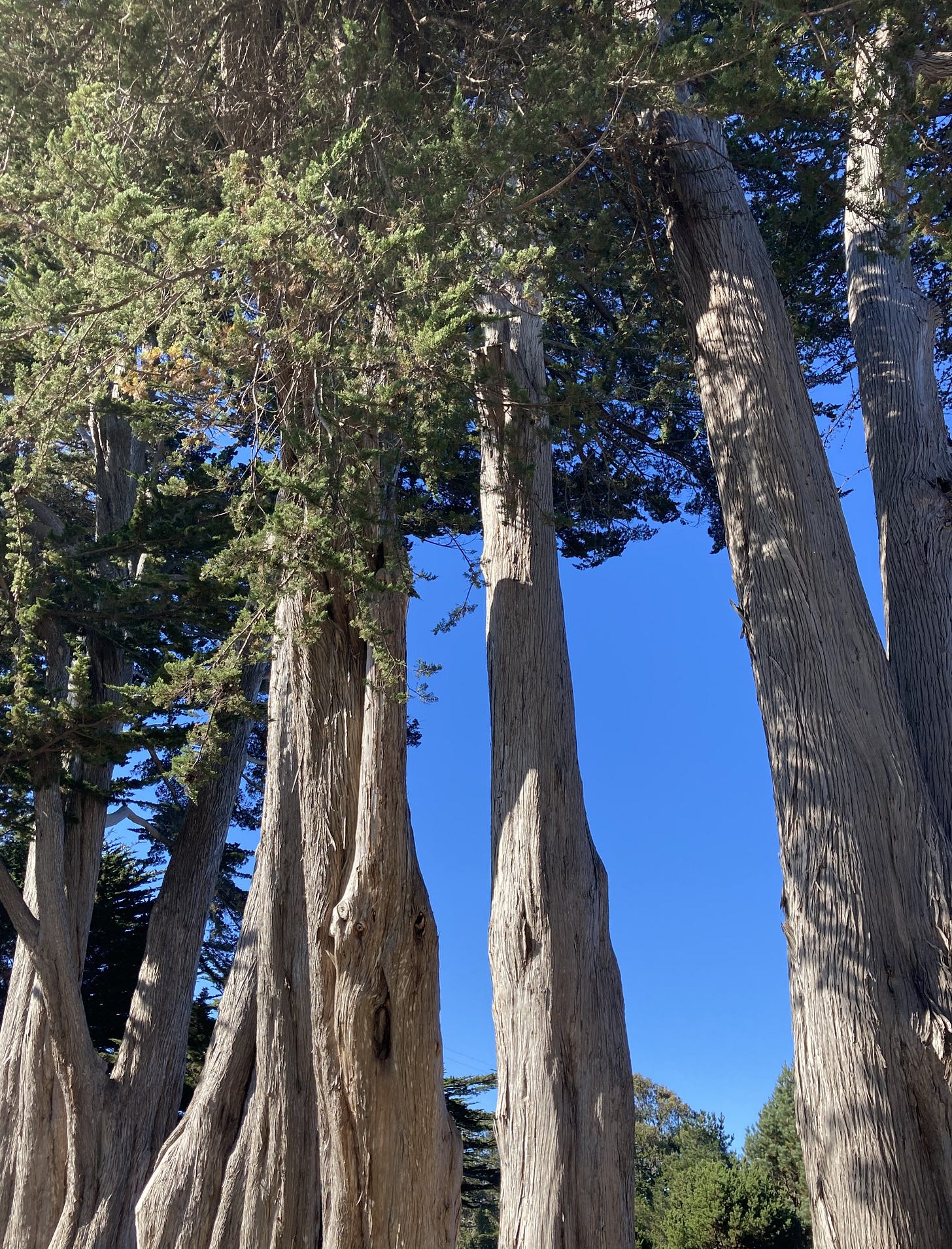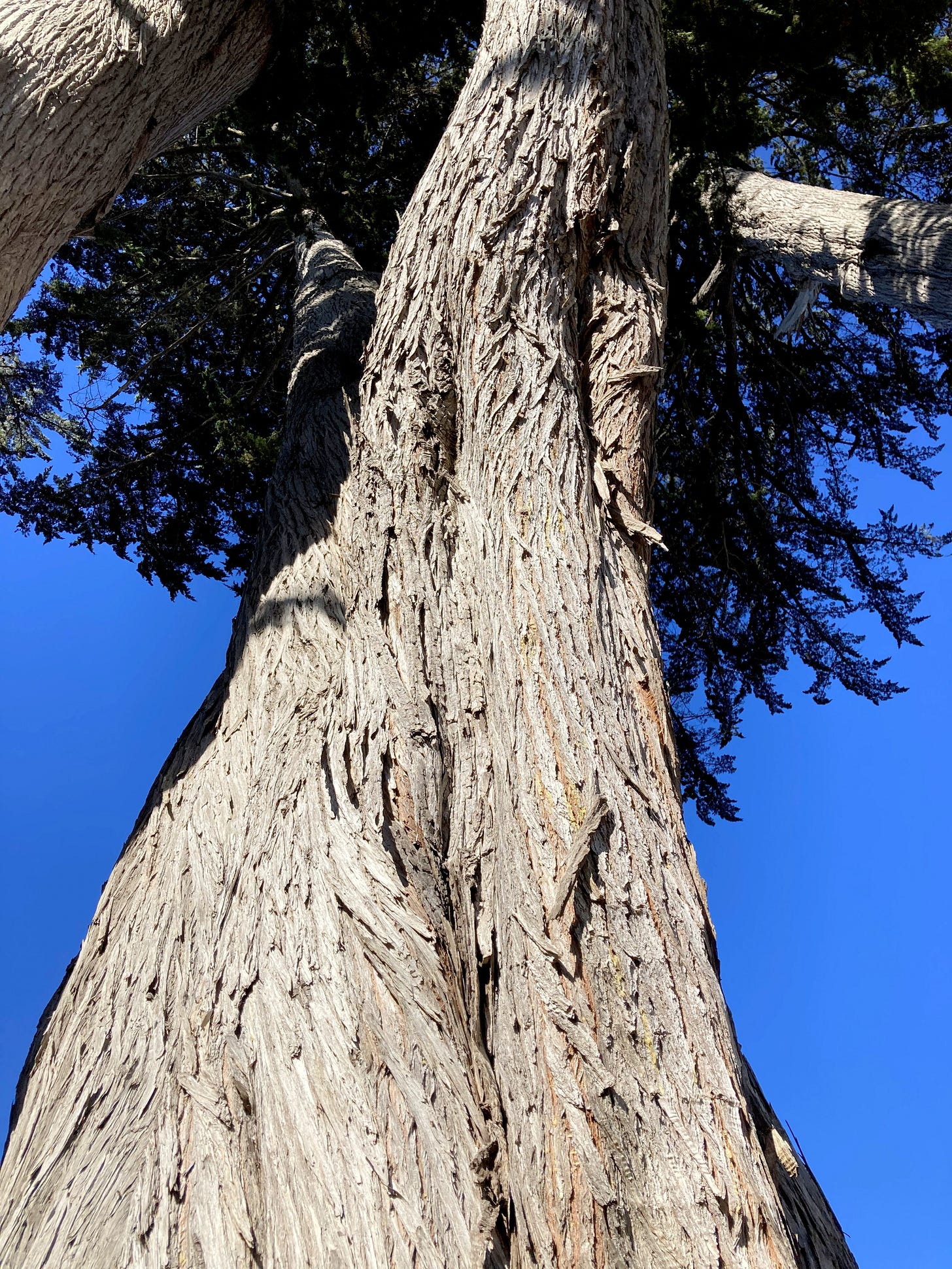This morning I parked my car in the upper parking lot at Point Cabrillo Light Station State Park. I was waiting for a friend to arrive. The plan was to walk down to the trails along through the coastal prairie that led to spectacular views of the Pacific Ocean. The rocky outcroppings and this ocean area is part of California’s extensive State Marine Reserve and Marine Protected Areas. And that is another story.
It was a beautiful mid-morning and the light upon the Monterey Cypress trees just outside the periphery of the parking lot caught my attention. I walked toward the trees and marveled at their outer bark textures and patterns. How often do we notice such beauty in our surroundings? What stories do these trees have to tell? “How old are they,” I wondered?
Monterey Cypress is known by its scientific name Hesperocyparis macrocarpa. It is a stunning coniferous evergreen tree indigenous to California’s central coast particularly around Carmel, at Cypress Point in Pebble Beach and at Point Lobos. They have been widely planted outside their native range up and down the California’s Coast and up through Oregon.
I never really took time to spend with these sentinel trees that have been standing there for years. How many times I have just passed them by and only offered a brief appreciation as I headed toward for my walk and to be out near the sea.
Recently, I was re-reading an article featured in the New York Times about the Mother Tree Project. Trees have been living teachers to cultures around the world for millennia. What are we missing here in our era of hyper modern times?
My friend arrived and I called to her and said, “Hey, look here. Have you ever noticed the amazing patterns in the bark of these trees?” She replied, “Wow…they are marvelous.” She then told me about some of the history of the property and that she thought these trees were planted. I agreed since I knew that they were native only to the “Monterey” area.
At one angle, as I looked up, the tree trunk appeared to be feathered.
And every tree had its own unique configuration. What an astounding designer nature is!
For thousands of years, the rich waters and headlands around Point Cabrillo were the summer hunting and gathering grounds of the Pomo people. Pomo housing varied with the locale: coastal residents constructed dwellings of heavy timber and bark. I wondered if the trees were here before the Pomo people were in the vicinity here and free prior to European colonization.
Later this evening I searched on the internet looking for some record about this grove of trees. Oddly enough I could not find any history other than factoids about everything else regarding this area. There were many references to the 1850’s stranding of the sailing brig named the Frolic that struck a reef just north of Point Cabrillo. As the story goes, this led to the discovery of great stands of Coast Redwood and Douglass Fir forests in this area which in turn kicked off the pursuit of timber logging. As the ‘49er California Gold Rush created a huge surge in the need for lumber, logging enterprises popped up and scrambled to harvest as much trees as possible. There was plenty of info about lumber production up and down the Pacific coast. There was plenty of info about the light station origins, etc. .
But what about the living trees and the social life of trees and the significance of their underground mycorrhizal networks around their root systems?
What do trees think of us? Wow! If I were a musician, a cellist or even if I could lug a baby grand piano out there, could I perform melodies to honor the majesty of those trees? I can dream that can’t I?
It is time to re-establish our connection to trees. If not for our sake but for theirs?






Yes, and thanks for the pictures.